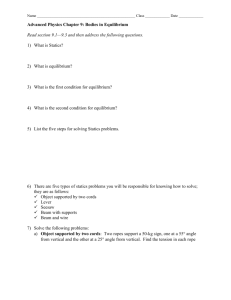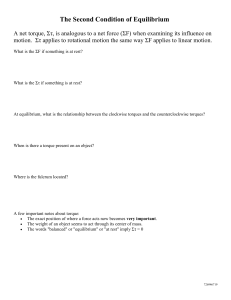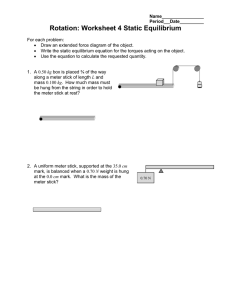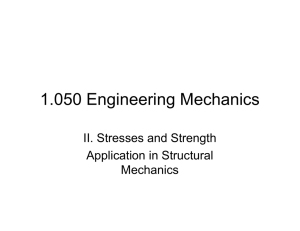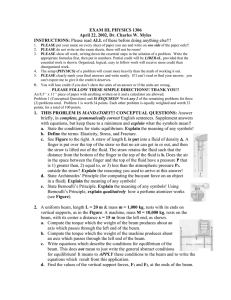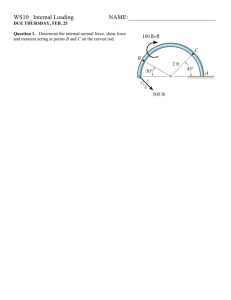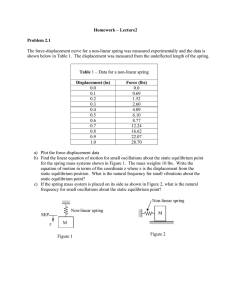August 29, 2007
advertisement
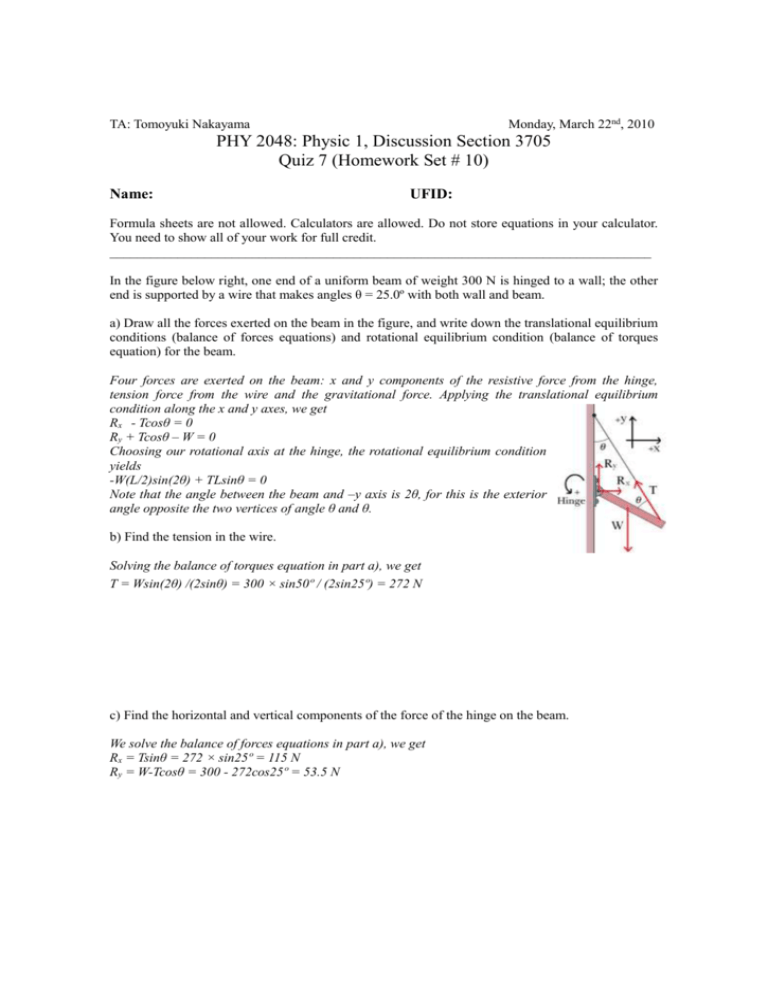
Monday, March 22nd, 2010 TA: Tomoyuki Nakayama PHY 2048: Physic 1, Discussion Section 3705 Quiz 7 (Homework Set # 10) Name: UFID: Formula sheets are not allowed. Calculators are allowed. Do not store equations in your calculator. You need to show all of your work for full credit. ________________________________________________________________________________ In the figure below right, one end of a uniform beam of weight 300 N is hinged to a wall; the other end is supported by a wire that makes angles θ = 25.0º with both wall and beam. a) Draw all the forces exerted on the beam in the figure, and write down the translational equilibrium conditions (balance of forces equations) and rotational equilibrium condition (balance of torques equation) for the beam. Four forces are exerted on the beam: x and y components of the resistive force from the hinge, tension force from the wire and the gravitational force. Applying the translational equilibrium condition along the x and y axes, we get Rx - Tcosθ = 0 Ry + Tcosθ – W = 0 Choosing our rotational axis at the hinge, the rotational equilibrium condition yields -W(L/2)sin(2θ) + TLsinθ = 0 Note that the angle between the beam and –y axis is 2θ, for this is the exterior angle opposite the two vertices of angle θ and θ. b) Find the tension in the wire. Solving the balance of torques equation in part a), we get T = Wsin(2θ) /(2sinθ) = 300 × sin50º / (2sin25º) = 272 N c) Find the horizontal and vertical components of the force of the hinge on the beam. We solve the balance of forces equations in part a), we get Rx = Tsinθ = 272 × sin25º = 115 N Ry = W-Tcosθ = 300 - 272cos25º = 53.5 N




